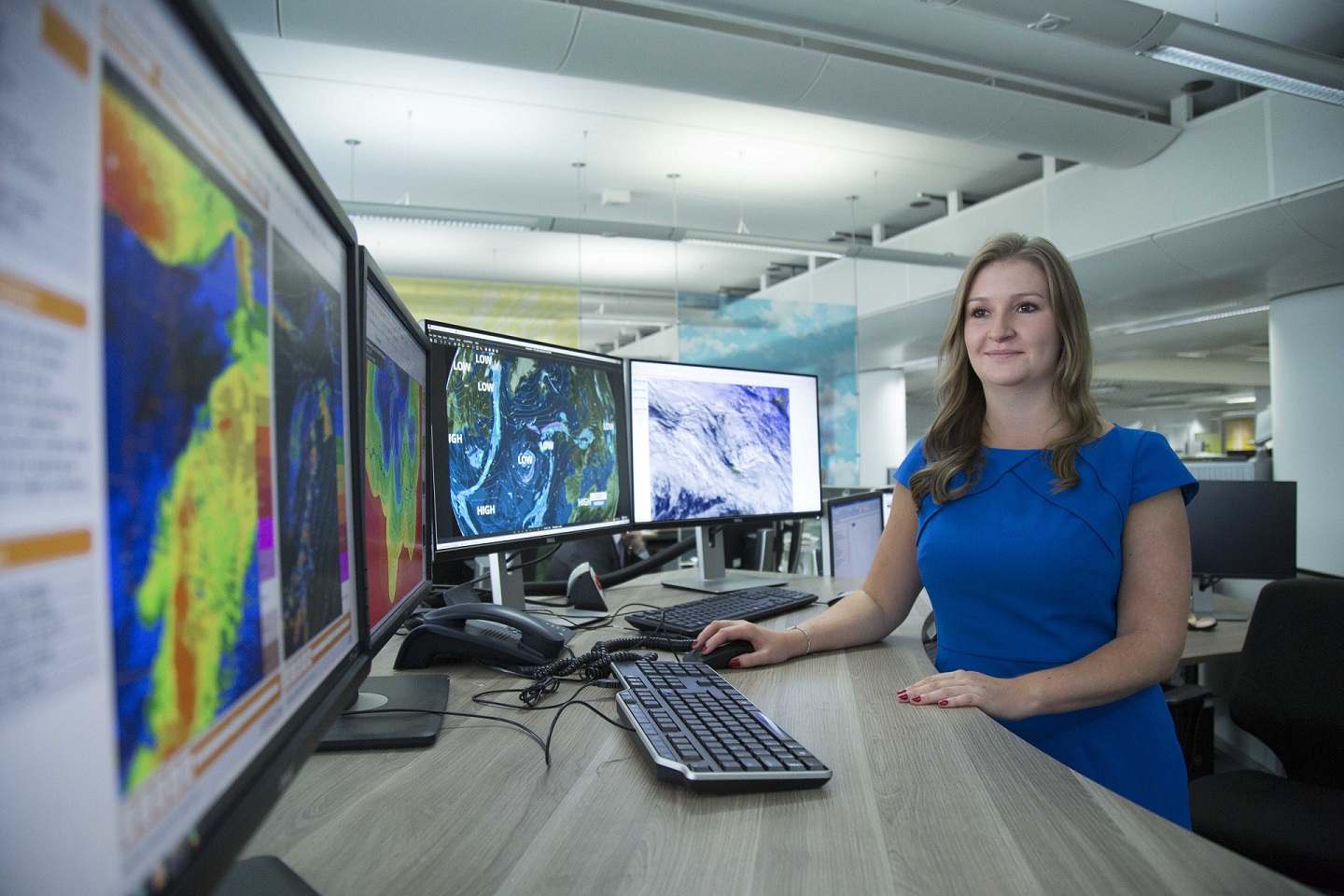Meteorologists at the Met Office are central to the delivery of accurate and timely weather forecasts.
Their work combines scientific expertise, observational analysis, and model interpretation to ensure forecasts reflect the latest atmospheric conditions.
In this blog, we’ll outline the key responsibilities of meteorologists and the techniques they use to refine and communicate forecasts.
Working with models and observations
Forecasting starts with computer models that simulate how the atmosphere behaves, using millions of calculations. These models predict how the weather might evolve based on current conditions, but meteorologists are key to making sense of these predictions.
They compare different model outputs and check real-time observations, such as temperature, cloud cover, and humidity, to judge what’s most likely to happen. If something unexpected shows up, such as extra cloud cover during the day, which can lower temperatures and lead to overnight fog, meteorologists can evaluate the potential impact and adjust the forecast. These adjustments ensure the forecast remains accurate and relevant.
Understanding atmospheric complexity
The atmosphere is a highly complex and interconnected system. A small change in one variable many miles away can influence conditions elsewhere. Meteorologists use their understanding of these relationships to anticipate how the weather might change. This process involves assessing the knock-on effects of changes in the likes of temperature, cloud cover, and many other factors, and updating the forecast accordingly.
READ MORE: Met Office weather stations: How we measure the weather
Because the atmosphere is ‘chaotic’ in nature, even tiny changes in its current state can have big influences on the future forecast. That’s why forecasts are updated regularly using the latest data and insights. These updates help keep the forecast accurate and aligned with current conditions and expectations.
Comparing global models
Meteorologists at the Met Office use a range of forecasting models, including those developed by other leading international centres such as the European Centre for Medium-Range Weather Forecasts (ECMWF), the National Centres for Environmental Prediction (NCEP), and Deutscher Wetterdienst (DWD). Each model uses slightly different methods and data, so comparing them helps meteorologists understand the range of possible weather outcomes.
This approach is particularly useful for forecasts several days ahead, when weather systems, like those that bring wind and rain, haven’t yet formed By comparing models, meteorologists can assess confidence levels and communicate uncertainty clearly, sometimes offering alternative scenarios with estimated probabilities to help people better understand what might happen.
Using ensembles to assess confidence
Ensemble models are a key tool used to explore uncertainty in weather forecasts. These models run the same forecast multiple times with slightly different starting conditions, producing a range of possible outcomes. When the results are similar across model runs, confidence in the forecast is high. If they vary, meteorologists may highlight alternative possibilities and adjust the forecast accordingly.
READ MORE: Marine observations: Underpinning forecasts and climate understanding
Consistency between model runs is also important. If the forecast remains stable across successive runs, confidence increases. If it shifts significantly, meteorologists investigate the reasons and update their guidance as needed.
Applying empirical techniques
Empirical techniques, based on physics and observations of the relationships between weather variables, remain a valuable part of the forecasting process. These methods have been developed over decades and are especially useful in marginal situations.
For example, they help determine whether precipitation will fall as rain, snow, or sleet, or whether fog is likely to form. By comparing current conditions with these equations, meteorologists can quickly assess whether the model output is realistic and make adjustments where needed.
The value of meteorologists
Meteorologists at the Met Office are scientists, analysts, and communicators. They ensure that forecasts are not only technically accurate but also clear and useful. Their work supports a wide range of users, from emergency responders and transport operators to the general public.
By combining model data, observations, empirical techniques, and global comparisons, meteorologists produce forecasts tailored to the UK’s unique weather patterns. They also help communicate risk and uncertainty, enabling people to plan and prepare effectively.
The role of meteorologists at the Met Office is essential to delivering accurate and meaningful weather forecasts. Their expertise complements the power of computer models, ensuring that forecasts reflect the latest data and the complex nature of the atmosphere.
Presenters, advisors and experts: We have many meteorologist roles
The Met Office employs meteorologists across a wide variety of roles. Our most visible meteorologists are our presenters, all of whom are trained meteorologists and play a key role in communicating forecasts to the public. We have meteorologists who focus on briefing local authorities and responders about the potential impacts of severe weather, helping them prepare and respond effectively.
READ MORE: The UK land observation network: Underpinning weather and climate understanding
We also have embedded forecasters who work directly with partners in specific industries. For example, Met Office meteorologists working alongside partners at National Air Traffic Service (NATS), National Highways and at Defence stations across the world to providing trusted weather intelligence to support the safe and efficient running of their operations.
At the heart of the Met Office is our Expert Weather Hub. This is a team of highly experienced meteorologists who have honed their skills and expertise over decades. They sit at the centre of our operations, advising on key updates to model outputs and how to best to refine forecasts to ensure accuracy and reliability.
As forecasting technology continues to evolve, the insight and judgement of our meteorologists remain essential to the Met Office’s mission to keep the UK safe and informed.
Keep up to date with weather warnings, and you can find the latest forecast on our website, on YouTube, by following us on X and Facebook, as well as on our mobile app which is available for iPhone from the App store and for Android from the Google Play store.



